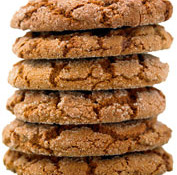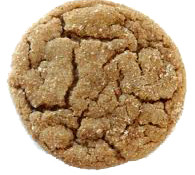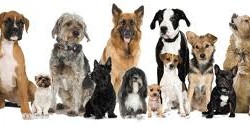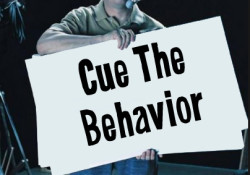I worked at a corporation for a little over 10 years downtown. From almost the start of my employment, I rallied department admins to save their newspapers for me, so I could put them to good use in dog rescue, animal shelters, and at the wildlife center. There wasn’t even a recycling program going on there at the time, so the papers usually ended up in the trash. Every Friday, for 10 years, I wheeled a cart from floor to {Read More}
Inaugural Kong Cleansing
I stuff Kongs with food to encourage my dogs to work for meals when I don’t use their daily rations for dog training. I also encourage my dog training clients to use food toys for their dogs. Kongs serve to use some of the mental energy dogs have. My personal bias is that Kong Dog Toys, and other food-destuffing toys, are doggy meditative toys. Have you ever watched a dog with a Kong between his paws licking out the {Read More}
Food Toys
I usually use Kongs as food toys for my dogs. Food toys/puzzles are a magnificent way to stretch your dog’s mind muscles. When you can’t train with your dog’s meal, then use food puzzles. This way the dog still has to work for his meal, and that means expending that mental energy that you and I know is *work* to put out! Oh, and you don’t have to use just one type of food toy, or one food toy of {Read More}
Why Use Food For Dog Training?
Food is a motivator to every living being on the planet. Without food, we would perish. When the feeling of hunger strikes, it’s pretty hard to think of anything else but eating, especially as your stomach starts to growl. Having such a powerful motivator is almost like having a magic wand. Food gets a dog’s attention. Dogs focus when food is in the training game. Food motivates. Period. This is cause to celebrate not complain! Reinforcing behaviors with food makes {Read More}
Fort Lauderdale Cookie Trainer
Cookie training is a euphemism for dog training using food as motivation. That euphemism is most often used by force trainers, those using pain to train. Dog trainers who were running classes when I first started learning to train were unimpressed, and maybe even uneducated, about the power behind training with treats. Force was the dominant method of dog training then, literally and figuratively. But now there is a much better way to train dogs using two of the four {Read More}
Cookie Training
When I was first learning how to train dogs, it was back in the 80’s. My first classes were with Dick Koehler. Through his tutelage, I learned how to train dogs using a method of force. If we are looking at quadrants, that would be positive punishment (which really isn’t positive at all) and negative reinforcement. Positive punishment was what we did to dogs when we yanked up on the choke chain when a dog didn’t obey the command, sit, {Read More}
A Dog’s Temperament
This quote is from the Temperament Test for Dogs website describing what temperament is. “W. Handel, German Police Dog Trainer, in his article, “The Psychological Basis of Temperament Testing,” defines temperament as ‘the sum total of all inborn and acquired physical and mental traits and talents which determines, forms and regulates behavior in the environment.’” That is the combination of Fixed Action Patterns and Learning abilities I described in an earlier blog post, and qualities that can be used in {Read More}
Trick Dog Champion
Here is the Trick Dog Champion Title video of my own dog, Australian Shepherd Dudley. I’m very proud of this accomplishment, and for the fun I’ve had with Dudley as we’ve trained for this title. But the fun doesn’t stop here. We are still training new tricks! If you’re interested in training your dog to do tricks, contact me! I’m a Certified Trick Dog Instructor and would be glad to work with you towards your trick dog training goals. Helen {Read More}
Fixed Action Patterns and Learning
Fixed Action Patterns, or FAPs, are hardwired into our dogs’ genetic make-up. They are stereotypical behaviors to a certain group: everyone has them, or each sex has them, or everyone of a certain age has them. FAPs do not have to be learned. FAPs aren’t learned, and they don’t happen by chance. There is usually a specific something that triggers them. For example, when a dog sees a quick moving object, his prey drive may be activated. A pup’s nursing {Read More}
Rolling Rolling Rolling
I’ve trained my Australian Shepherd, Dudley, through four trick titles: Novice, Intermediate, Advanced, and Expert. We are now on the border of our final title, Trick Dog Champion. Teaching tricks to your dog, whether to achieve titles or just for fun, is an excellent way to bond and have fun together. Trick training can be done inside on a rainy day or outside on a beautiful day. Some tricks require props and some don’t. Ball rolling is a great outdoor {Read More}
Peanut Butter Cookie Recipe
This recipe was created by a friend of mine, Melani, for her own wonderful dog, Alice. I leave the instructions intact, along with her sense of humor. Melani’s PB Cookie Recipe 1-1/2 cup flour (white or whole wheat) 1/2 cup rolled oats 1 tsp baking powder 3/4 cup milk (Can be low fat but whats the point?) 1-1/2 cups peanut butter 2 Tbsps blackstrap molasses Whisk dry, stir in wet, knead for a min on a floured surface, roll, cut, {Read More}
Clicker Training To Salvage A Behavior
A clicker is a tool used to communicate exactness to a dog. It’s the bridge between the moment a dog executes a behavior to the reward he gets after the click. It’s a communication device. Always pair the click with a reward. Otherwise, your clicker will soon become useless. Besides building behaviors, clicker training can salvage them. Here is a 30-second example of how helpful a well timed click can be. And be assured, Dudley got a treat after the {Read More}
AKC Community Canine Title Announced
Here are some excerpts from a letter the AKC sent out today regarding a new CGC opportunity. AKC ADDS NEW ADVANCED LEVEL TO CANINE GOOD CITIZEN® PROGRAM With the introduction of AKC Community Canine, the AKC’s CGC program now provides a comprehensive three- level training program for dogs and their owners. Beginning with AKC S.T.A.R. Puppy, progressing to Canine Good Citizen and now to AKC Community Canine, the CGC program trains dogs through all stages of life to be well {Read More}
Cues vs. Commands
What’s the difference between a cue and a command? Being a crossover trainer, that is someone who started training dogs when commanding was all that was taught to someone who now trains without force or pain, I can tell you there’s a big difference between the two words. Though both cuing and commanding refer to hand or verbal signals given to the dog to request a behavior. A command assumes forceful control over a dog. What follows an unfulfilled command {Read More}
Hemostat and Muzzle
This is a hemostat and having one around the house for emergencies is an excellent idea when you’re a dog parent. Take for example a recent incident I had. Before I go into it, though, a moment of explanation about the dog who prompted me to write this blog post because she is the reason behind the most recent hemostat use. She’s a senior Dobermann, somewhere between ten and eleven. I am sure she was the runt of her litter. {Read More}













